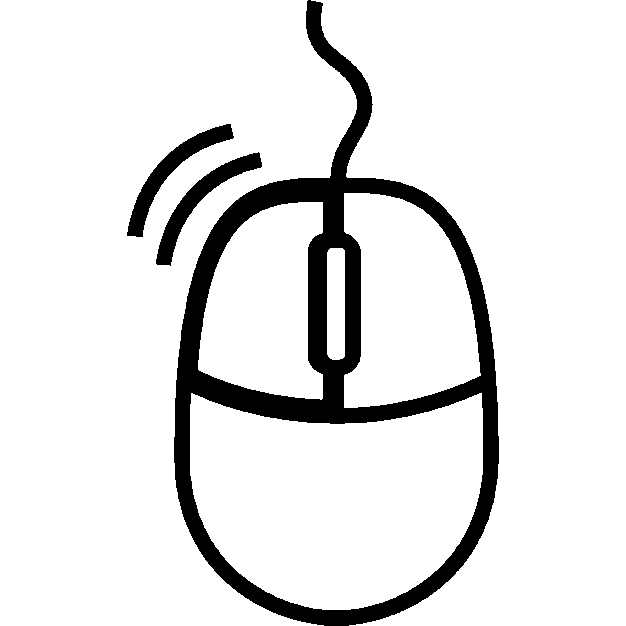... from Anne de Saint-Hubert,
![[left] = Christian de Saint-Hubert in 1945.](photos/FirstAfterCamp.jpg)
Christian's daughter ...
Obituary of Christian de Saint Hubert:

*** Christian de Saint Hubert was born in Tientsin, north China, in April 1927. His father Georges and mother Lucie were born in Belgium. His father served in the Belgian Army during World War I, married soon after the war and then moved to China. In China, he worked first as an engineer in a Belgian railway company but later managed a Belgian bank. Christian spent the first 19 years of his life in China, including three years (1943-45) in a Japanese concentration camp at Weihsien (now Weifang). For years afterward, he needed medical help because of spine problems resulting from time in the camp. (Coincidentally, his future wife, Sonia de Souza Bandeira, spent the first ten months after Pearl Harbor in unpleasant custody in Japan as a consequence of being the daughter of a Brazilian diplomat resident there; these foreign diplomats were exchanged at Laurenco Marques in 1942 for Japanese diplomats interned abroad. Sr. de Souza Bandeira then was posted to Miami, FL, as Vice-Consul.) Christian studied law and political science at the universities of Brussels and Geneva, from which he graduated in 1952 and 1953, respectively, with a Ph.D. in law and an M.A. in political science. (His parents remained in China until the victory of the Communists, when they returned to Belgium.)
[exerpt] from "Warship International" issue No.2, 1994

Christian de Saint Hubert
(1927-1992)
Compiled by Christopher C. Wright
Obituary of Christian de Saint Hubert ― Warship International ― issue No.2 1994
CHRISTIAN de SAINT HUBERT, one of the world's leading naval historians and a strong supporter of INRO, died in 1992. His loss continues to be felt deeply and materially diminishes the future knowledge of naval affairs that will be available to us.
His Naval Research Contributions
He was a prodigious researcher, compiling dossier after dossier of lists and resumes of information on ships and their builders. He also was a uniquely vigorous correspondent, sharing information freely and fully. A notable aspect of his research is that much of it was performed in close cooperation with other experts worldwide. In a letter dated 15 March 1982, he said in passing, "The brotherhood of naval historians is indeed very international."
His greatest interest was the production of comprehensive naval and merchant fleet ship lists. To these, he added from the mid- 1970s the production of dossiers on shipyard history and associated ship (and marine engine) construction lists. Examples of these lists were published over the last twenty years in The Belgian Shiplover, Warship (Conway), and Warship International. A provisional listing of all his known publications is provided at the end of this account. Most of his research efforts remain unpublished, however representative items including the typescripts "Les Batiments a Roues de la Marine Francaise (1819-1887)" [ Paddlewheel Vessels of the French Navy}, and "Chantiers et Ateliers de la Gironde, Lormont-lez-Bordeaux (1880-1960)," produced in 1983 and 1981, respectively.
Christian directed his intense energy at the most difficult and challenging topics. Thus, he diligently researched ― for example ― the navies of China (pre-1912); Thailand; Russia (pre-1917); and many of the smallest navies. He prepared files on the major ship-builders of Britain, France and Germany, and then moved onto the Russian yards. In a similarly challenging way, he was interested primarily in the now little-known first several decades of steam navigation, from the early 19th Century into about 1880, from which point the published documentation began to be much more substantial. He exploited those comparative ad-vantages that fate gave to him. His last assignment in Madrid, for example, resulted both in making several key friendships with leading Spanish naval historians and in undertaking his own archival research, resulting in several excellent, path-breaking articles. Similarly, he wholeheartedly plunged into the maritime history of Brazil and South America when he returned to that continent in 1988. His work took him to many different places, often far from large archival or library collections. Despite this limitation, he effectively gathered key source material when he could and wove it together to produce integrated accounts that add greatly to an understanding of basic facts.
With these interests, it is no surprise that he was involved actively with the unique journal The Belgian Ship lover (1949-1975), the publication of the Belgian Nautical Research Association (BNRA). Christian stepped in during 1974-75 to provide editorial help to Mde. Yvonne Scarceriaux in producing this magazine after Mde. Scarceriaux 's husband, BNRA founder and President Paul Scarceriaux suffered a stroke. Christian remarked "When I took over ... there was very little publishable, ready material at hand, so my first task was to ask for papers to be sent in a hurry. [INRO members] Stephen Roberts, Paul Silverstone and Eric Lacroix were particularly helpful." Alas, the effort failed. From his post in Madrid, Christian was not able to coordinate the work closely enough, and did not have sufficient time to keep the ship afloat. TBS No.156 (No. 4/1975) was the last bulletin issued, with editorial remarks provided by Mde. Scarceriaux and Mr. F. van Otterdyk. Although BNRA members looked toward a time that TBS would be recreated, that has yet to come to pass. Ilia Life and Diplomatic Career
Christian de Saint Hubert was born in Tientsin,
... north China, in April 1927. His father Georges and mother Lucie were born in Belgium. His father served in the Belgian Army during World War I, married soon after the war and then moved to China. In China, he worked first as an engineer in a Belgian railway company but later managed a Belgian bank. Christian spent the first 19 years of his life in China, including three years (1943-45) in a Japanese concentration camp at Weihsien (now Weifang). For years afterward, he needed medical help because of spine problems resulting from time in the camp. (Coincidentally, his future wife, Sonia de Souza Bandeira, spent the first ten months after Pearl Harbor in unpleasant custody in Japan as a consequence of being the daughter of a Brazilian diplomat resident there; these foreign diplomats were exchanged at Laurenco Marques in 1942 for Japanese diplomats interned abroad. Sr. de Souza Bandeira then was posted to Miami, FL, as Vice-Consul.) Christian studied law and political science at the universities of Brussels and Geneva, from which he graduated in 1952 and 1953, respectively, with a Ph.D. in law and an M.A. in political science. (His parents remained in China until the victory of the Communists, when they returned to Belgium.)
In 1954 Christian joined the Belgian Foreign Service and served in Madrid, Leopoldville, Paris (NATO), Bangkok, Adis Ababa, Buenos Aires, and Madrid. In 1962, he married, having met his wife-to-be in Bangkok where her father-Sr. Luiz de Souza Bandeira-had opened the first Brazilian embassy as his country's first Ambassador to Thailand. (Unfortunately, Sr. de Souza Bandeira died soon afterward, after opening the Brazilian Embassy in Lagos, Nigeria) From the fall of 1978 Christian became Belgian Ambassador to Costa Rica, Nicaragua, and Panama, with residence in San Jose. The late 1970s were exciting, unsettling years in Central America, and Christian acquired an intense interest in the politics of the region. After almost five years, he then proceeded to Nairobi in 1983 to serve as Ambassador to Kenya, Uganda and Seychelles. Duty in Nairobi proved exhausting. He did double duty as Belgian representative to a United Nations environmental organization headquartered in Nairobi, and attended a two week-conference in the Seychelles in March, 1984, for example. Posted home in October 1987, he served as head of the African Department at the Foreign Ministry in Brussels for about a year. Having to oversee policy concerning 47 countries made for a heavy workload but had the benefit of giving him "almost daily contact with the Minister [of Foreign Affairs]."
The high point, and final assignment of his diplomatic career was his posting as Ambassador to Brazil. Commencing on 1 October 1988, he served success-fully until retiring on 1 May 1992. The pace of work again was heavy, but he was able to make time to return to naval research after a few years' interruption. The flood of correspondence resumed, and he clearly enjoyed life in Brazil.
During the course of 1990, Christian and his wife decided to retire in Brazil. They chose to live in (in Christian's words) "Petropolis, State of Rio; 100 kms from the old capital but 840 meters up and thus not in Rio's hot, steamy climate." They bought a house, supervised some extensive renovations, and prepared to enjoy a well-earned retirement. It was not, however, to be. During the morning of 12 September 1992, young thieves from the local area broke into the house and shot Christian dead. His wife, having gone into town to work at her antique shop, survived.
Christian de Saint Hubert was a "Renaissance Man." He was passionately interested in the affairs of the world; in culture and all the fine arts; and in people. He had an irrepressible sense of humor, as well as a rare ability to see himself and his environment in a critical but honest and balanced perspective. He was fluent in several languages, and wrote perfect, elegant English. He was always "burning the candle at both ends," working long into the night at his desk on naval history and correspondence when he could, and then arising early the next day to deal with myriads of diplomatic issues. (A letter dated 22 May 1984, for example, noted: "(11 pm) (rather tired; it has been a heavy day!)" An-other letter of 16 Dec. 1985 began ("In a great hurry!") His letters had the personal touch of being handwritten in a fountain pen; although he did type some of his lists and essays, much of his work was done by hand. His principal intellectual pursuit was naval history, and we have much to thank him for in this field.
The Future
One article that M. de Saint Hubert has given to INRO remains in preparation for publication, "Spanish Destroyers of 1908-1936." The article was intended to be produced through joint authorship with Snr. Juan Luis Coello Lillo and the research assistance of Snr. Augustin Ramon Rodriguez Gonzalez. This article will be published in Warship International once some additional preparatory work is complete. Other of his lists and compilations that are available will be reviewed for possible subsequent publication as well.
His research archives were donated to the Naval Institute of Brasil. M. de Saint Hubert was a friend of Capt. Max Guedes, head of the Brazilian Navy's historical office, and who was well acquainted with Christian's work. Upon his arrival in Brazil, Christian immersed himself in the historiography of the Brazilian Navy. He also met and worked with Mr. Gilberto Ferrez, grandson of the great photographer Marc Ferrez, whose recently-published photographic album on Brazilian warships of the late 19th century (A Marinha por Marc Ferrez 1880-1910. Editora Index-Verolme, Rio de Janeiro, 1986) is a masterpiece, and which Christian found particularly pleasing. (And which, as a footnote, can be understood further by consulting Gilberto Ferrez and Weston J. Naef, Pioneer Photographers of Brazil 1840-1920. The Center for Inter-American Relations, New York, 1976-still in print.) For the last several years of his life, Christian was researching the history of steam navigation on the Amazon and its tributaries. (A successor firm of the original company providing steamers, established in 1852, still was extant in operation as of 1989.)
It is to be hoped that other students of maritime history, particularly those living in Brazil, will build on the foundations that Christian has established.
His widow and daughter reside in Brazil; his son lives in Belgium. A sister lives in the United States. To his relatives, the Internationational Naval Research Organization again sends its condolences and sympathy.
#
![[left] = Christian de Saint-Hubert in 1945.](photos/FirstAfterCamp.jpg)






